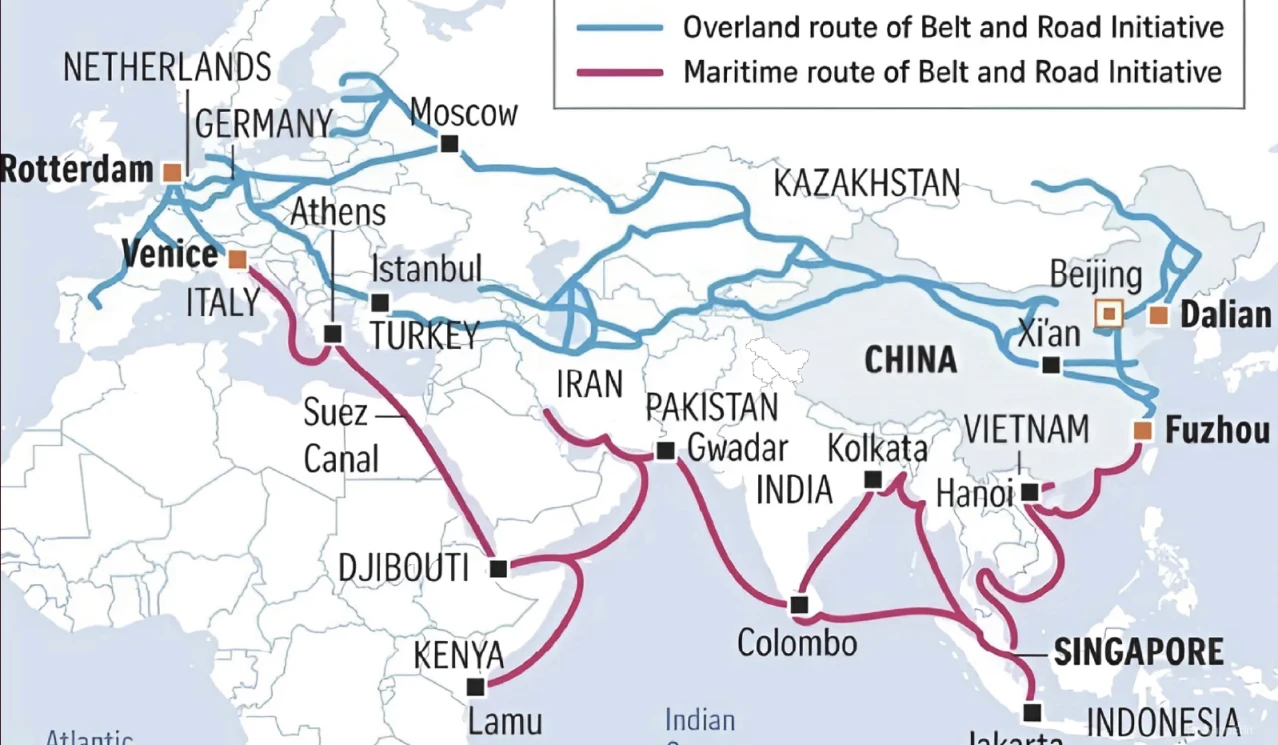Framework is expected to pave the way implementing BRI projects in Nepal, which joined BRI in 2017.
- Also, both countries have committed to developing the Trans-Himalayan Connectivity Network (THMDCN) and improving infrastructure in roads, railways, aviation, and power grids.
- Pakistan and Sri Lanka are also part of the BRI.
About BRI
- Genesis: Initiated as 'One Belt One Road' in 2013, it seeks to connect Asia with Africa and Europe via land and maritime networks.
- Aim: Improving regional integration, increasing trade and stimulating economic growth.
- It comprises Silk Road Economic Belt (A trans-continental passage) and Maritime Silk Road (A sea route).
Key Concerns for India
- Security Threats: Nepal shares a long land border (about 1700 km) with India and act as a buffer zone between both countries. China’s Infrastructure project will make border areas more vulnerable in case of conflict.
- E.g. Chinese-funded airport in Pokhara (located close proximity to border)
- Regional Influence: China’s economic influence in Nepal may push the country to align politically with China, weakening India’s regional influence.
- This is considered a part of China’s "string of pearls" strategy to encircle India with Chinese-friendly nations.
- Also, influence over Nepal may be exercised by using Debt Trap Diplomacy.
- Other:
- Impacting Trade Relations, India is currently Nepal's largest trade partner, with investments in cross-border energy trade.




